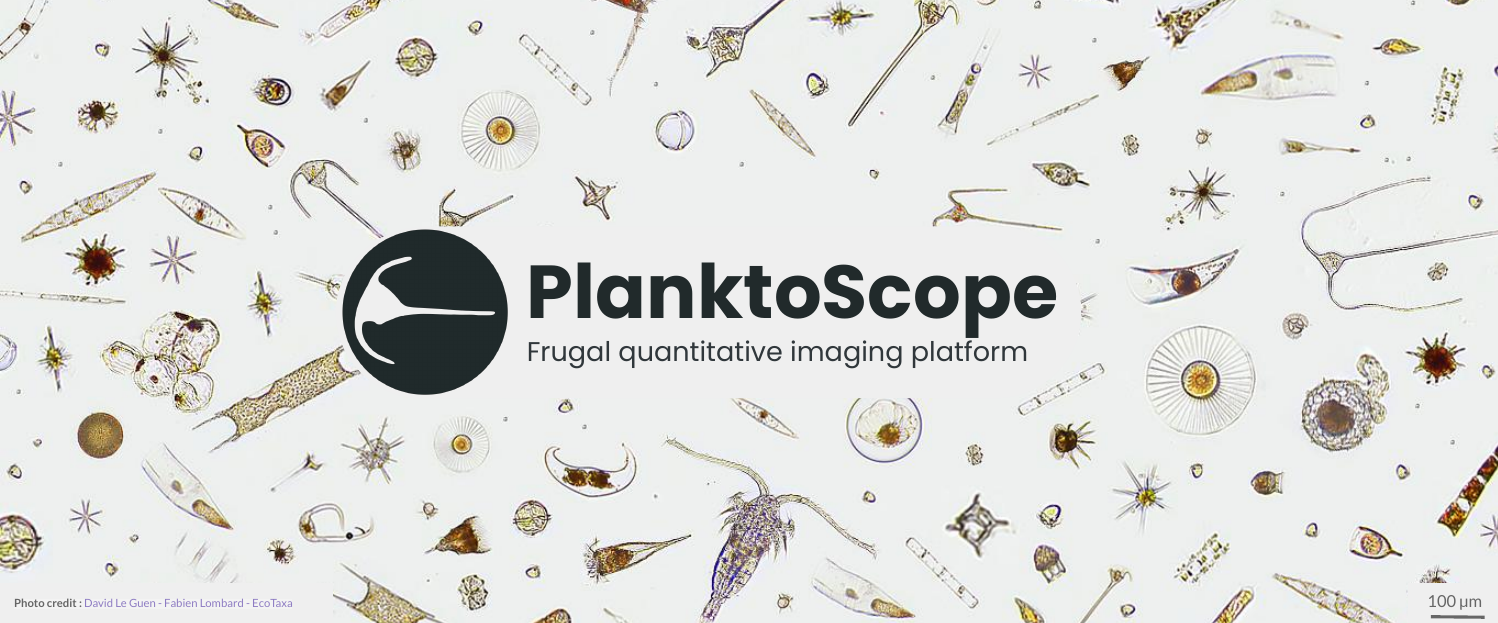4.5 KiB
PlanktoScope: Open and Affordable Quantitative Imaging Platform
What are Plankton?
"Drifting endlessly, midway between the sea of air above and the depths of the abyss below, these strange creatures and the marine inflorescence that sustains them are called 'plankton' — the wanderers" - Rachel Carson
Plankton are tiny organisms that drift in the oceans and play a crucial role in the global ecosystem. They are responsible for fixing 30-50% of the world's carbon dioxide and form the foundation of the global food chain. Despite their importance, studying plankton can be challenging due to the vast area of the oceans and the limited resources of research fleets and specialized equipment. The PlanktoScope is an open-source hardware and software platform that aims to make it easier to study plankton by providing high-throughput quantitative imaging capabilities at a low cost.
What is a PlanktoScope?
The PlanktoScope is a modular, open-source platform for high-throughput quantitative imaging of plankton samples. Its small size, ease of use, and low cost make it suitable for a variety of applications, including the monitoring of laboratory cultures or natural micro-plankton communities. It can be controlled from any WiFi-enabled device and can be easily reconfigured to meet the changing needs of the user.
Key Features
Here are some key features of the PlanktoScope:
- Low cost: The PlanktoScope is designed to be affordable, with parts costing under $1000.
- Modular: The PlanktoScope is modular, meaning it can be easily reconfigured to meet the changing needs of users.
- Open-source: The PlanktoScope is based on open-source hardware and software, making it accessible to a wide community of engineers, researchers, and citizens.
- Versatility: The PlanktoScope is versatile, and can be used to study a variety of plankton types, including laboratory cultures and natural micro-plankton communities.
- High-throughput: The PlanktoScope is capable of high-throughput quantitative imaging, allowing users to analyze large numbers of samples quickly and efficiently.
- WiFi-enabled: The PlanktoScope can be controlled from any WiFi-enabled device, making it easy to use and deploy in a variety of settings.
- Portable: The PlanktoScope is small and portable, making it easy to transport and use in the field.
- Ease of use: The PlanktoScope is designed to be easy to use, with instructions for assembly and use available on the PlanktoScope website.
Device specification
Size
- height: 150 mm
- wide: 350 mm
- depth: 150 mm
Hardware
- 4 Core ARM-Cortex-A72 Processor with 1,50 GHz
- 4 GB Arbeitsspeicher (depending on the purchased version)
- 64 GB Flash memory (depending on the purchased version)
- Sony IMX477R Image sensor with 12.3MP
- M12 mount optics with 16 and 25 mm lenses
- Automatic focus via linear guide
- automatic sampling via peristaltic pump
- the case is made of wood fiberboard
Software
- Debian based Embedded Linux operating
- Node-Red based user interface
- Python Image processing service and cloud connection
Characteristic
- Focus stage control
- Pump control
- Automatic image capture
- Automatic segmentation, optimization and object detection
- 4,200 images, 41,000 objects, ~ 1 minute
- Control via smartphone or tablet
License
- Hardware: CERN Open Hardware Licence
- Software: GNU General Public License
- Dokumentation: Creative Commons Attribution-ShareAlike
Certification
Areas of Application
- Plankton analysis of small animals and algae living in water
- Mobile use via external power supply
System Requirements
- a Web-Browser to control the device (like a Notebook, Smartphone or Tablet)

